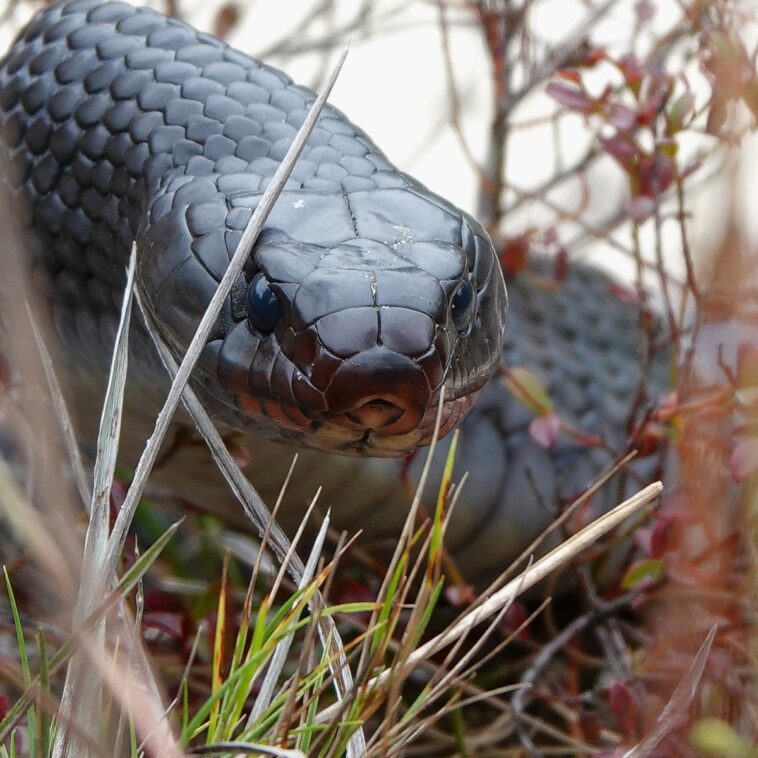Eastern indigos grow up to 8 feet long and rank as North America’s longest snake.
Which means the 6-foot, 10-inch indigo that DNR Wildlife Conservation Section Chief Matt Elliott caught during a survey in Candler County in February didn’t set any records. But it did add to the known history of this snake – it was the third time it had been caught – and to efforts to conserve the federally threatened species.
DNR has been doing mark-recapture surveys for indigos for seven years. The federally permitted work, which complements occupancy surveys led by the nonprofit Orianne Society, involves tagging the big nonvenomous snakes with PIT tags, taking measurements and recording if any were caught before. The data both marks individual snakes and helps determine population estimates.
Elliott said the goal is to “figure out what the actual population levels are – how many snakes are out there.” Occupancy surveys, in comparison, gauge the presence of indigos and population trends.
DNR’s Tim Keyes, left, Erin Cork and Matt Elliott show the big indigo caught again in Candler County. (Matt Moore/DNR)
The recent indigo was actually the first one caught and tagged on the Candler tract, which covers roughly 1,000 acres of private, non-commercial forestland. That initial capture was on March 6, 2019. The male snake was 5-feet, 7-inches long then.
He was caught again Feb. 18, 2022, and then this February, when he weighed in at slightly more than 5 pounds. The snake is probably about 10 years old. (Indigos’ lifespan in the wild is estimated at 8-12 years.) The farthest distance between capture sites was slightly more than a half-mile. That’s not surprising, considering that male indigos range widely, Elliott said.
And although this one did try to escape, it didn’t seem alarmed about being caught.
“It didn’t try to bite or musk,” Elliott said. “It only hissed.”
Maybe being caught and released twice before helped.
SHELL SHOCKED

Indigo eggshells found at a gopher tortoise burrow on the Candler tract (Matt Moore/DNR)
DNR wildlife technician Matt Moore made a rare find during that February survey in Candler County: the shell of a hatched indigo egg. A few weeks later, he and fellow technician Andy Day discovered two more at the same spot.
The eggshells were not only a first for Moore, they would have been for almost anyone. That’s because only the basic nesting habits of indigo snakes are known.
Females lay about four to 12 eggs in the spring. The eggs hatch mid-summer through September. Indigos sometimes nest in and around gopher tortoise burrows, which the snakes use regularly as refuge.
There is a theory, however, that indigos favor abandoned burrows, where tortoises aren’t crawling in and out and possibly disturbing the eggs. (The Orianne Society’s Ben Stegenga explains that idea and more in this video.)
The Candler tract eggs were at an “inactive” burrow. The first eggshell found was outside of it. The other two were inside. Moore said it looked like an armadillo had used the burrow and may have kicked the one egg out while digging.
As for that first shell – a leathery, granular pouch that felt like it had been dusted with salt – “You could see where the snake had split (the shell) open with its egg tooth,” Moore said.




GIPHY App Key not set. Please check settings